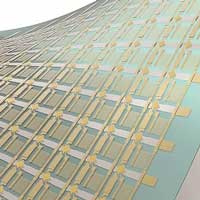| Dec 12, 2019 | |
|
(Nanowerk News) Chinese scientists recently developed a flexible electronic skin (e-skin) capable of self-powered neural stimulation and inducing a neural response (Nano Energy, “Self-powered, wireless-control, neural-stimulating electronic skin for in vivo characterization of synaptic plasticity”). The technology will be useful in characterizing synaptic plasticity. |
|
| The research was conducted by Dr. ZHAN Yang’s group from the Shenzhen Institutes of Advanced Technology (SIAT) of the Chinese Academy of Sciences, in collaboration with Drs. XUE Xinyu and ZHANG Yan from the University of Electronic Science and Technology. | |
| Synaptic plasticity is one of the main neural mechanisms underlying learning and memory in organisms. Long-term memory requires modification of the synaptic strength between neurons. | |
| Traditionally, electrical neural-stimulation techniques for characterizing synaptic plasticity required an external power source and steer-by-wire system. | |
| To overcome these limitations, the researchers proposed a novel self-powered, neural-stimulating e-skin for in vivo characterization of synaptic plasticity. | |
| Composed of flexible photosensitive triboelectric units, the e-skin can be driven by various slight body motions and is wirelessly controlled by photo illumination. Dr. Zhan said photo illumination can influence the electrical neural-stimulation signals of the e-skin. “Thus the electrical neural-stimulation process on the mouse brain area can be controlled by illumination,” he said. | |
| The scientists implanted an electrode to record the fEPSP (field excitatory postsynaptic potential) in the CA1 of the mouse hippocampus as well as a stimulating electrode in the CA3 area. A record of mouse brain activity confirmed the effectiveness of e-skin neural stimulation. | |
| This work demonstrates that the self-powered e-skin has potential applications in the quantification of neural plasticity changes. It could also be applied in novel multifunctional, battery-free and wireless-controlled neural-stimulation systems, as well as in sensory substitution or brain-machine interfaces. |
These articles might interest you as well:

